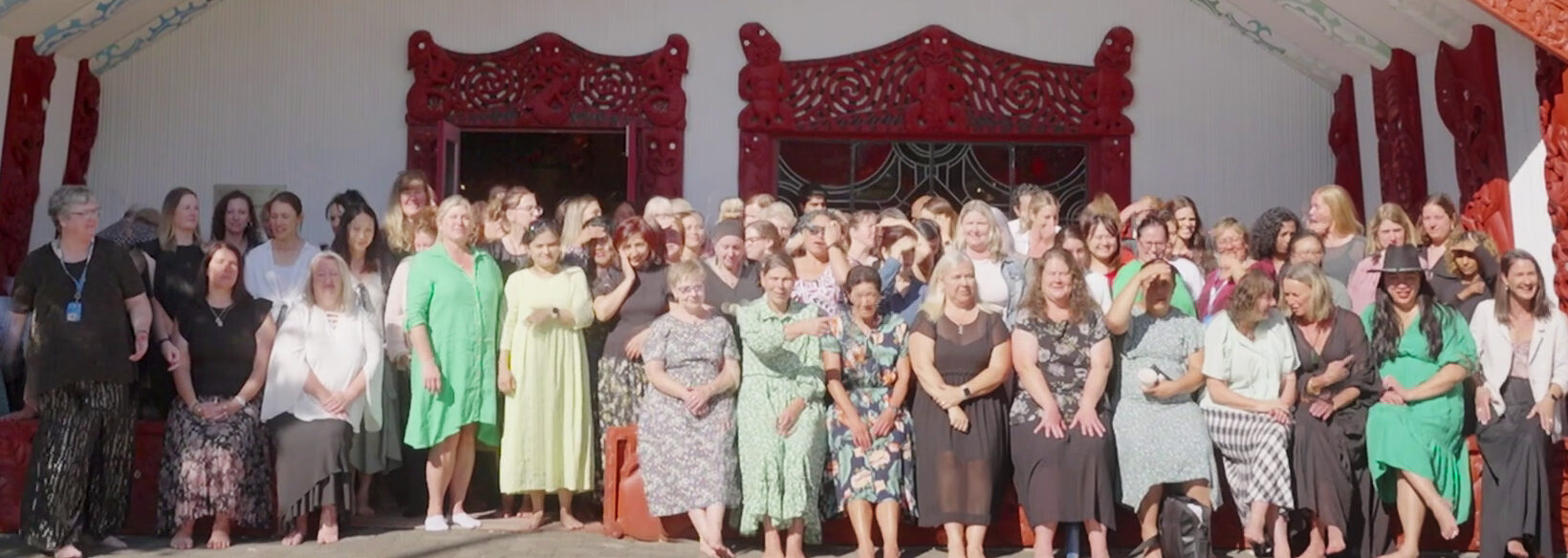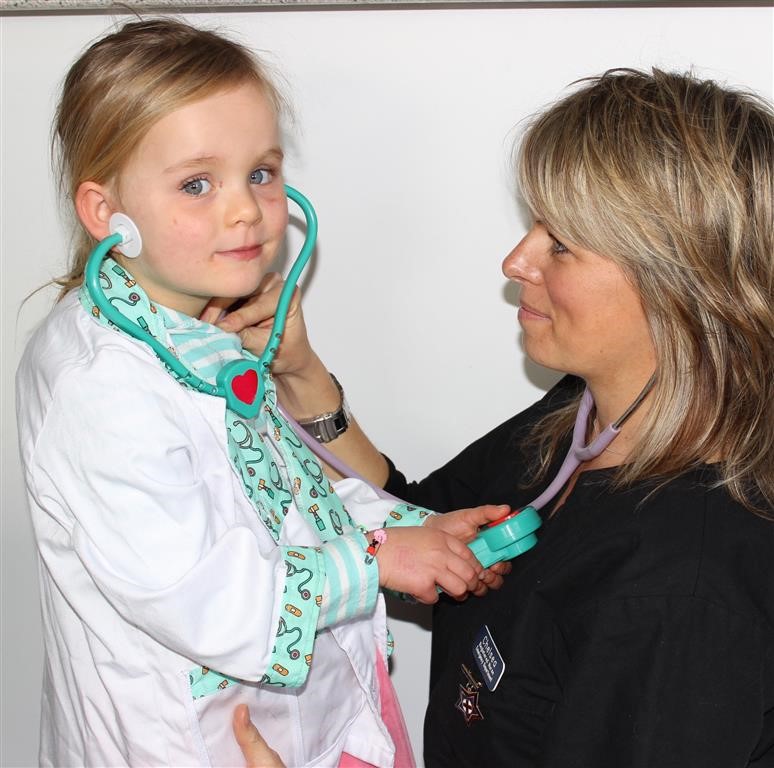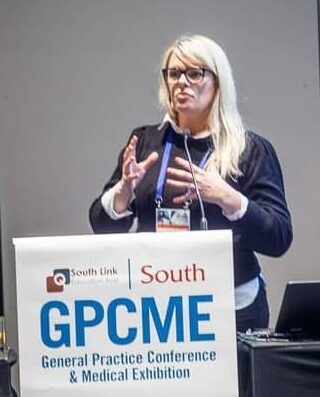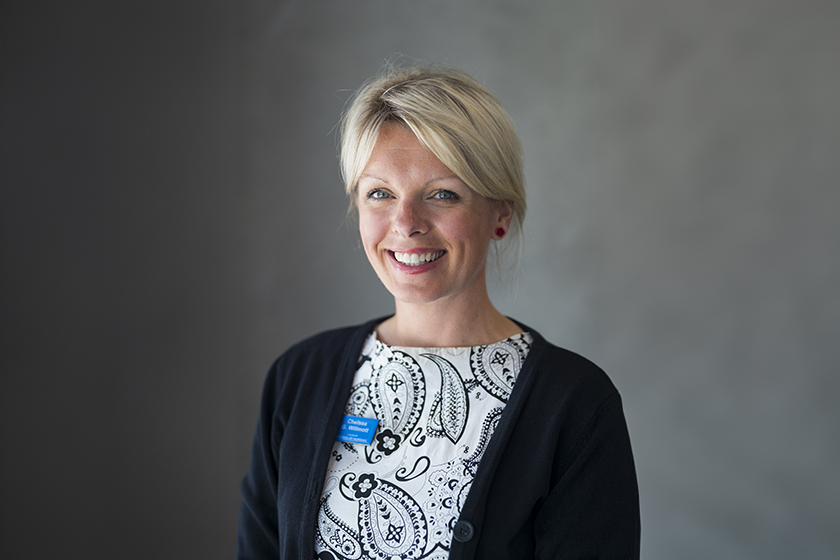Willmott began her nursing career after meeting some Kiwi nurses in her native Melbourne in the early 2000s. She felt there must be something special about how nurses were taught in New Zealand.
“It just looked like it suited my needs with an exciting blend of clinical and academic and that concept of moving through mental health, primary care and secondary services really appealed — it was the holistic approach.”
‘The other big focus is to be like ivy — to be everywhere and really trying to support the growth of all nurses but particularly advanced nursing roles.’
She applied to do her nursing degree at Otago Polytechnic and has largely remained in the South Island — now Central Otago — ever since.
Right from the start, she felt inspired to drive change, she told Kaitiaki. Now, some 20 years later, that is exactly what she intends to do, fresh in a new role as chair of professional body, Nurse Practitioners New Zealand (NPNZ).

She wants to drive a better understanding of the “mystery” of nurse practitioners (NPs) — and of all the different nursing and advanced roles that exist today.
“But the other big focus is to be like ivy — to be everywhere and really trying to support the growth of all nurses but particularly advanced nursing roles.”
‘One of the hardest groups to get behind nurse practitioners are registered nurses’
The challenge is not only with the medical profession — which has been hostile in the past — but within the nursing workforce itself.
“I think medicine is slowly becoming more supportive — we are seeing this shift. But one of the hardest groups to get behind nurse practitioners are registered nurses [RNs],” she said.
“Some suggest that nursing is oppressed by medicine and, in some literature, this is thought to be the cause of oppression in nursing.”

Willmott suspects a touch of tall poppy syndrome might also come into play when RNs progress their career — but emphasises that nurse-to-nurse unkindness can go both ways.
‘It is important that we all make an effort to show one another what true support and collegiality means — and not offer a smile with a knife.’
“We know . . . when some nurses move into advanced roles like clinical nurse specialist, nurse educator, nursing management or registered nurse prescribing roles, they are not always treated kindly by their nursing colleagues,” she said. “Equally, we understand that some of those nurses in advanced nursing roles are not kind to registered nurses.”
She hoped nursing could “shift” its culture. “It is important that we all make an effort to show one another what true support and collegiality means — and not offer a smile with a knife.”
Working as an emergency nurse in both New Zealand and Australia, Willmott noted this culture of horizontal violence — bullying — among nurses and wanted to change it.

“As I started to see how nurses treated one another, I thought, ‘How do I help? How can I actually influence this?’ ”
Making nurses feel valued and empowered — “that’s always been my thing”.
‘It’s not about one person being at the top of the mountain and having everybody else do what that person says — health care is not like that now.’
She went on to postgraduate study, before returning to Otago Polytechnic as a lecturer.
But she always kept up her clinical practice — and still does, working as a rural NP alongside a role at Victoria University of Wellington’s NP training programme.
“I’ve found the two complement each other [education and practice]. Your cup gets filled in academia and you’re around all these inspiring people who want to push through the glass ceiling. Then you go back into the clinical environment and you’re facing the reality — the day-to-day pressures.”
Contemporary health care is about many different people with different backgrounds and skill all contributing their own “flavour” to the team and patient experience, she believes.
“It’s not about one person being at the top of the mountain and having everybody else do what that person says — health care is not like that now.”
‘Patriarchal’ attitude outdated
Historically, Willmott said there had been a “very patriarchal” attitude to nursing. Doctors would say to me: ‘I’ve worked hard and gone to med school . . . and how is it possible for a nurse to become a lead care provider?’ ”
This showed a lack of understanding about nurses’ education, confidence and capability to progress to working at a very high level, she said.
‘Sometimes it feels like you are working in the space between nursing and the medical profession — that’s how different it is.’
Willmott became an NP seven years ago, even though she wasn’t planning on it — she was going to stay in academia. But one day in her rural practice, she encountered a restriction on what she could provide to a patient and had to seek a GP out to give a prescription.
“For the first time, I felt frustrated — and thought, ‘How am I going to spend my career not being able to do the whole package for a patient – the assessment, test, diagnosis and prescription — all those wonderful things.”
NP and RN roles ‘so different’
The role was “so different” to that of RN.
NPs must learn how to manage risk, take full lead care responsibilities and be willing to “lean into the medical model and make safe decisions about diagnosis and treatment”, Willmott said.
“Sometimes it feels like you are working in the space between nursing and the medical profession — that’s how different it is.”
The NP scope was only launched in New Zealand in 2001 and had been something of a slow burn until a recent boom in confidence and numbers following the launch of Te Whatu Ora’s 2021 NP training programme (NPTP). This year, it offered a record 121 funded places.

The uniqueness of the role stems from how nurses engage with patients, she believes.
“As a student nurse, one of the first things that you’ve got to do is learn how to wash the patient. This approach is very different to how doctors start their journey with the human body, which is to work on cadavers and cut them up,” Willmott said.
“So the relationship with a human body and that innate connection and awareness and empathy . . . all of that, nurse practitioners have.”
It takes an average of nine years to become an NP, with a minimum of four years of practice required after graduation along with a clinical master’s degree.
Yet numbers are looking good — 800 and growing at last count. Of those, about 600 are members of NPNZ.
Increasing numbers of advanced practice nurses were great role-models for students who can now have career plan that takes them further than ever before, she says. “They’re saying ‘I’d like to one day go on and become a nurse practitioner’ or ‘I’d like to become a nurse prescriber’.”
Those pathways and aspirations weren’t there 10 years ago — and she reckons interest is only going to grow — especially as Te Whatu Ora was increasing its NP training placements.
With 120-and-growing new NPs hitting the workforce each year, “our workforce is going to double in a very very short space of time,” Willmott said. “The profession is a rapidly changing landscape and now, more than ever, we need to be behind one another and proud to be nurses.”
Gannon talks about the “doctor-nurse game” at the 2018 national rural health conference, here.



